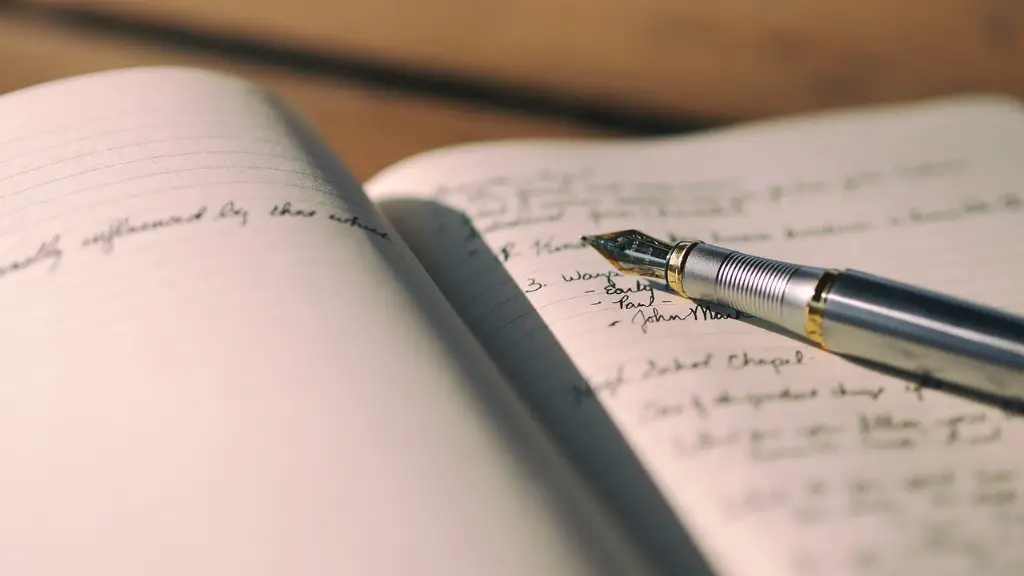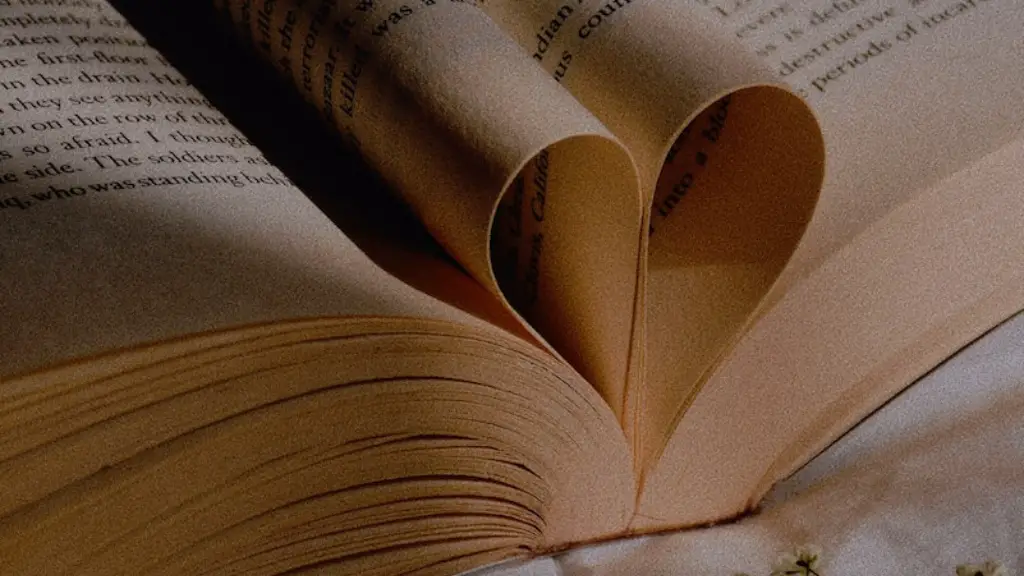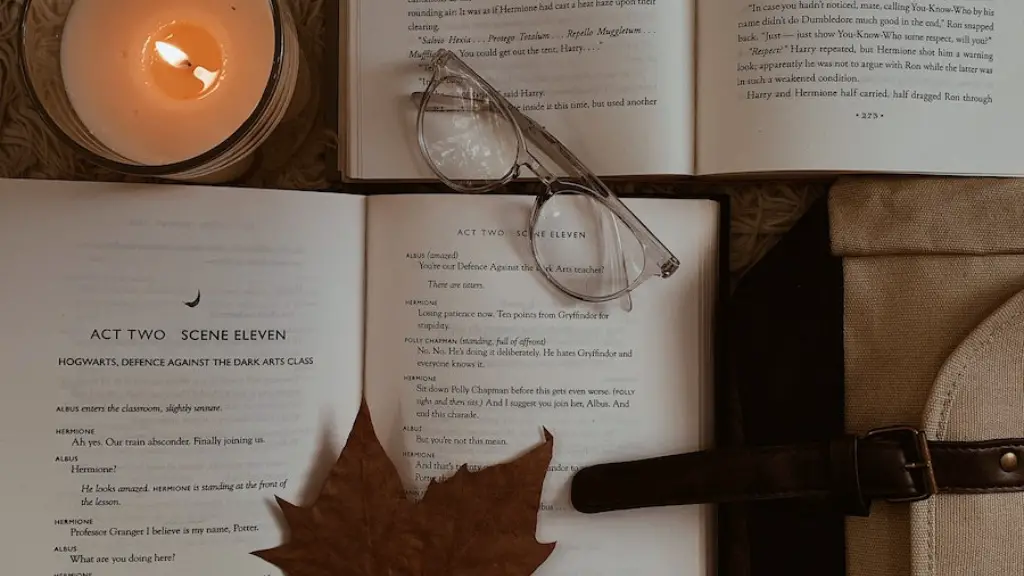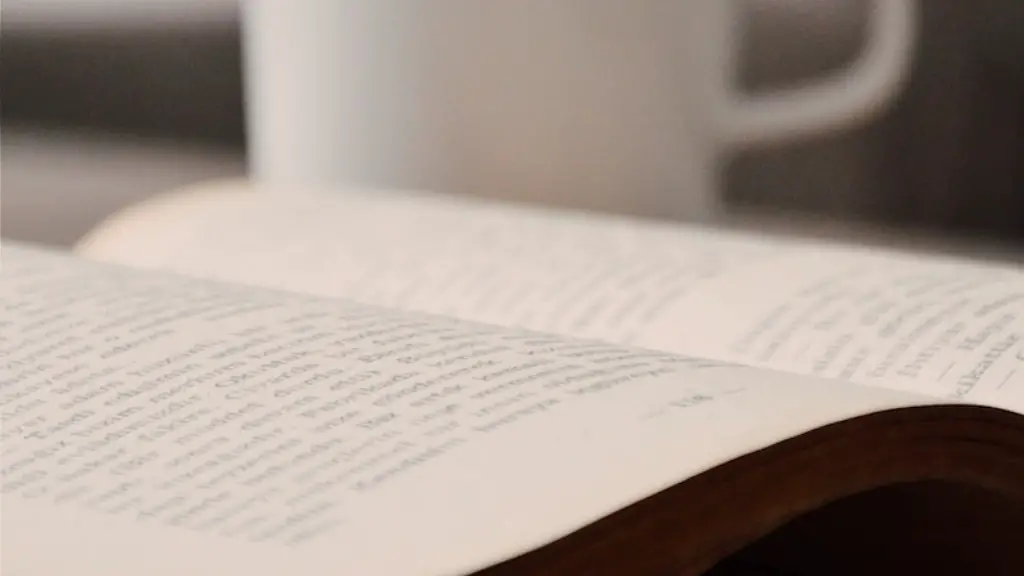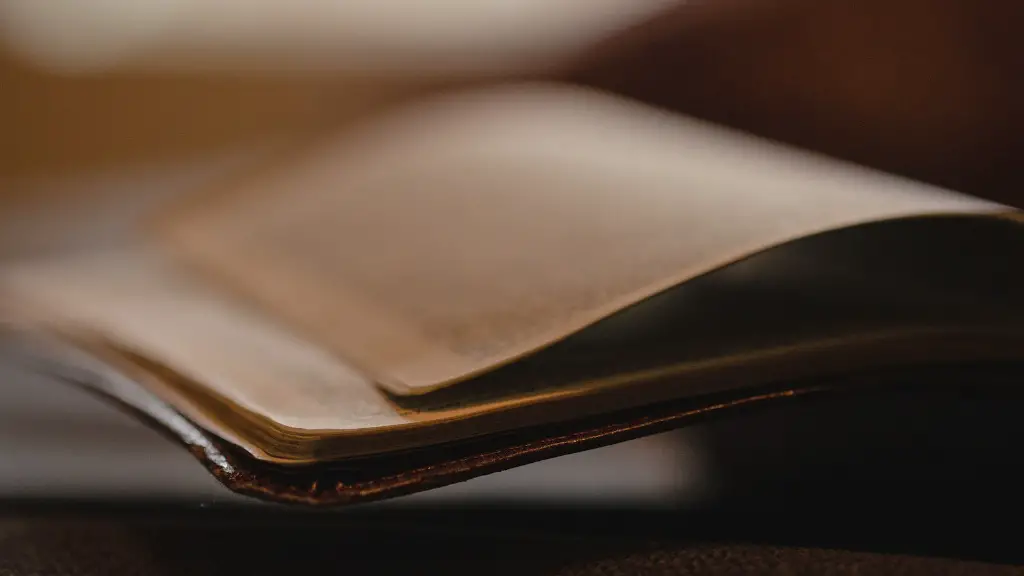Click for main article text.
Assonance in Poetry
Assonance is the repetition of vowel sounds in a series of words in the same line or phrase. This type of poetic device is often used by poets to create rhythm and imagery for the reader. Assonance has the capacity to create a specific mood and reinforce certain ideas. It helps to illustrate the desired imagery to the reader, as well as create a feeling of anticipation and excitement.
An example of assonance in poetry can be found in Walt Whitman’s’ “Song of Myself”: “I celebrate myself, and sing myself, and what I assume you shall assume, for every atom belonging to me as good belongs to you”. Whitman uses the vowels “I” and “o” to create a certain rhythm, as well as illustrate the connection between himself and the reader.
Assonance is also used to create a sense of continuity throughout a poem, as well as to add emphasis to certain lines. This technique is particularly effective when used alongside other poetic devices. One of the most common combinations of techniques used by poets is assonance and alliteration. Alliteration involves the repetition of consonant sounds within a line or phrase, and is often used alongside assonance to create a certain pattern, build suspense or bring attention to a certain idea.
This type of sound play is especially effective when used to convey emotion or a feeling of excitement. For example, in his poem “Bitten”,Tom Sleigh employs both techniques to create a feeling of rage and danger: “The masks are slipping off their faces and unleashed is a sudden savagery.” The repetition of the sounds “a” and “s” are used to create a sense of chaos and violence.
Assonance is also frequently used in English literature to create a sense of unity and to link different ideas together. This can be seen in the works of William Shakespeare, who used this technique to emphasize certain lines or ideas. For example, in his play,The Tempest, the phrase “Brave New World” is repeated multiple times, emphasizing the idea of a fresh start and a new beginning.
Overall, assonance is a powerful and often overlooked technique used to emphasize certain ideas and add musicality to a poem or piece of literature. This type of poetic device has the capacity to create a certain mood and set the tone of a piece of writing. When used in combination with other poetic devices, such as alliteration, assonance has the potential to create a truly unforgettable experience.
Click for ‘Types of Assonance’ text.
Types of Assonance
Although assonance is often thought of as a single type of poetic device, it can actually differ in both form and purpose. Different types of assonance can be used to create a variety of feelings or moods. It is important to be aware of these different types in order to make sure you are using assonance in the most effective way.
One type of assonance is known as internal assonance. This type of assonance occurs when two or more words in a sentence or phrase share a similar sound. For example, in the phrase “the night was so calm” the words “night” and “calm” both share the same vowel sound. This type of assonance creates a peaceful and tranquil feeling within the sentence.
Another type of assonance is known as isolated assonance. Isolated assonance occurs when the vowels in two different words do not share the same sound, but a single syllable in each word has the same vowel sound. For example, in the sentence “The snow is so white” the words “snow” and “white” are separated by a single syllable, but they still share the same vowel sound. This type of assonance can be used to create a sense of unity between two different words or ideas.
Additionally, assonance can also be used to create a sense of harmony and rhythm within a piece of writing. This type of assonance, known as rhythmic assonance, occurs when similar sounding vowels are used in succession. This type of assonance is especially effective for creating a strong and vibrant rhythm within a poem or piece of literature. For example, in the phrase “The bright lights of the city” the repetition of the “i” sound creates a strong and vibrant rhythm.
Ultimately, assonance is an important and often overlooked poetic device. Different types of assonance can be used to create a variety of feelings and moods, as well as convey ideas in an effective and creative way. When used in conjunction with other poetic devices, assonance can create a truly captivating experience.
Click for ‘How to Use Assonance’ text.
How to Use Assonance
Assonance is a poetic device that can be used to create a certain mood or feeling in a piece of literature. As with any poetic device, it is important to know how to use assonance in order to ensure that it is employed in the most effective manner. Here are a few tips on how to use assonance in your writing.
The first tip is to make sure that the words are relevant to each other. Assonance should be used in a way that brings emphasis to a certain idea. If the words do not share a connection, then the use of assonance will have no effect. For example, if the phrase “Love is strong” is written with the word “strong” replaced with the word “weak”, then the assonance will not have the same effect, as the words do not have the same meaning.
The second tip is to ensure that the words in the phrase or sentence share the same vowel sound but do not sound too similar. Similar sounding vowels can create a sense of unity, but they can also sound repetitive and dull. When using assonance, it is important to strike the right balance between repeating similar sounds and ensuring the words still sound fresh and original.
The third tip is to be aware of the different types of assonance and their effects. Different types of assonance can create a range of different emotions or feelings. Internal assonance can be used to create a sense of harmony, while isolated assonance can be used to emphasize a certain idea. Rhythmic assonance can be used to add a sense of motion to a piece of writing.
Overall, assonance is a powerful tool for adding emphasis to certain ideas and conveying emotion in a creative and interesting way. With the right techniques and knowledge, it can help to create truly captivating works of literature.
Click for ‘The Benefits of Assonance’ text.
The Benefits of Assonance
Assonance is a poetic device that has been used in literature and poetry for centuries. This type of sound play is effective in conveying emotion and creating a sense of continuity throughout a text. While it is often overlooked by writers, assonance has a variety of benefits that can help to make a piece of writing truly memorable.
One of the primary benefits of assonance is its ability to add emphasis to certain words or ideas. This is especially useful when writing literature, as it can help to illustrate the main point of the story and create a certain mood or feeling. Assonance can also be used to highlight moments of importance and foreshadow future events. This can help to create suspense and anticipation for the reader.
Assonance can also be used to create a sense of unity or continuity throughout a piece of writing. This poetic device can help to link ideas or images together, making a text easier to comprehend and remember. Additionally, assonance also has the potential to create a certain rhythm or musicality within a text. This can help to create a memorable and captivating experience for the reader.
Ultimately, assonance is a valuable poetic device that has the potential to improve any piece of writing. Whether it is used to emphasize certain ideas, create a sense of unity or simply to create a captivating experience for the reader, assonance can be a powerful tool for any writer.
Click for ‘How Assonance Has Evolved’ text.
How Assonance Has Evolved
Assonance has been used in literature and poetry for centuries. This type of poetic device has evolved over time, with different authors using assonance in different ways. Here is a look at how assonance has changed and developed throughout the years.
One of the earliest examples of assonance can be found in the works of ancient Greek poets, such as Homer and Pindar. These authors used assonance to create certain musical effects and build suspense. In the works of William Shakespeare, assonance was often used to create a sense of emphasis or to explore complex ideas.
In the 18th century, Romantic poets such as William Wordsworth used assonance to convey emotion, particularly emotions such as nostalgia and regret. In the 20th century, poets like Ezra Pound used assonance to create a sense of unity and to link different ideas together. This type of poetic device was also used by poets such as T.S. Eliot and Robert Frost to create a certain rhythm and create a more immersive experience for the reader.
Assonance has continued to evolve in the 21st century, with modern poets such as Seamus Heaney and Carol Ann Duffy using this type of poetic device to explore complex themes and create a variety of emotions and feelings. Overall, assonance has undergone a significant transformation throughout the years, with different writers using it in different ways.
